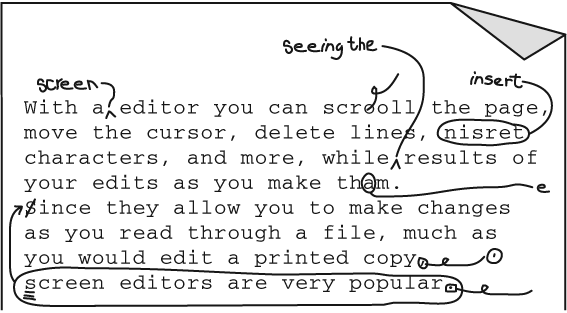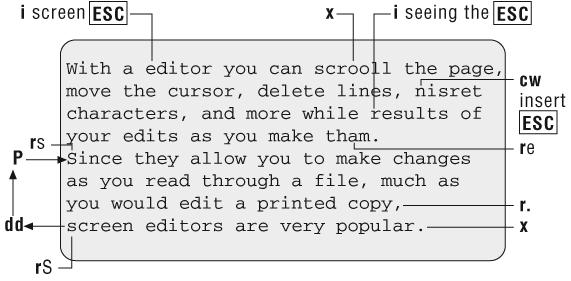Simple Edits
When you enter text in your file, it is rarely perfect. You find typos or want to improve on a phrase; sometimes your program has a bug. Once you enter text, you have to be able to change it, delete it, move it, or copy it. Figure 2-3 shows the kinds of edits you might want to make to a file. The edits are indicated by proofreading marks.

In vi you can
perform any of these edits with a few basic keystrokes: i for insert (which you’ve already seen);
a for append; c for change; and d for delete. To move or copy text, you use
pairs of commands. You move text with a d for “delete,” then a p for “put”; you copy text with a y for “yank,” then a p for “put.” Each type of edit is described
in this section. Figure 2-4 shows the vi commands you use to make the edits marked
in Figure 2-3.

Inserting New Text
You have already seen the insert command used to enter text into a new file. You also use the insert command while editing existing text to add missing characters, words, and sentences. In the file practice, suppose you have the sentence:
you can scroll
the page, move the cursor, deletelines, and insert characters.with the cursor positioned as shown. To insert With a screen editor at the beginning of the sentence, enter ...